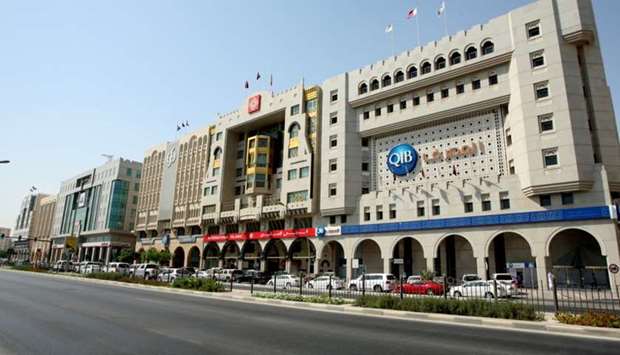Qatari banks external debt is expected to drop by 8% this year, S&P said and noted there may be a broad stabilisation over the next couple of years.
This, S&P said will be due to many factors including high oil prices that should result in stronger domestic deposit growth than was seen over the past few years.
S&P also expects Qatari banks financing needs to ease as several large infrastructure projects are delivered.
New central bank rules, it said have increased reserve requirements for short-term non-resident deposits and the weight of non-resident deposits in the calculation of bank's liquidity coverage and the net stable funding ratios, which will deter banks from using external sources to grow their balance sheets further.
According to S&P, risks related to Qatar's high level of non-resident deposits previously materialised in 2017, when $22bn - the equivalent of 14% of 2017 GDP and about 20% of total external liabilities - left the
Qatari banking system after a group of Arab and African states imposed a blockade on Qatar.
“We understand that most of the deposits were withdrawn when they matured, and that around one-third of them related to the boycotting nations. The authorities - mostly the QIA - compensated the Qatari banks by providing about double the amount of funds that had left the system, namely, $43bn, or 27% of 2017 GDP,” S&P noted.
Beyond the risks stemming from banks' short-term external funding profiles, the financial system coped well with the pandemic and the subsequent withdrawal of forbearance measures.
“We expect credit losses will remain elevated in 2022, at around double their pre-pandemic rates of 50 basis points (bps). Rising interest rates should support profitability and bolster already strong levels of capitalisation.”
Like other countries, inflation has increased in Qatar and S&P expects the consumer price index to increase by 5.5% on average in 2022.
Amid rising inflation, the QCB increased the repurchase rate by 300 bps since the beginning of the year to 4% following the rate hikes by the US Federal Reserve.
S&P anticipates an acceleration in GDP growth this year as non-hydrocarbon sectors such as tourism, transport, and construction benefit from Qatar's hosting of the FIFA World Cup, which is expected to bring in about 1.2mn tourists.
Economic growth thereafter is likely to be relatively soft through 2025. Government investment, much of which is outside the hydrocarbon sector, will gradually decline, with major infrastructure projects nearing completion.
S&P forecasts that GDP growth will accelerate toward 5% in 2022 as Qatar hosts the FIFA World Cup, before moderating toward 2% in 2023-2025.
Qatar's ambitious plans to increase LNG capacity should boost GDP growth over 2026-2027, after which growth should moderate with production plateauing at the new higher level beyond 2027.
“We do not expect significant policy shifts over the forecast period through 2025, and we expect improved regional co-operation to continue,” S&P said.
S&P recently raised its long-term sovereign credit rating on Qatar to 'AA' from 'AA-', assigned a stable outlook, and affirmed the country’s 'A-1+' short-term rating.
This, S&P said will be due to many factors including high oil prices that should result in stronger domestic deposit growth than was seen over the past few years.
S&P also expects Qatari banks financing needs to ease as several large infrastructure projects are delivered.
New central bank rules, it said have increased reserve requirements for short-term non-resident deposits and the weight of non-resident deposits in the calculation of bank's liquidity coverage and the net stable funding ratios, which will deter banks from using external sources to grow their balance sheets further.
According to S&P, risks related to Qatar's high level of non-resident deposits previously materialised in 2017, when $22bn - the equivalent of 14% of 2017 GDP and about 20% of total external liabilities - left the
Qatari banking system after a group of Arab and African states imposed a blockade on Qatar.
“We understand that most of the deposits were withdrawn when they matured, and that around one-third of them related to the boycotting nations. The authorities - mostly the QIA - compensated the Qatari banks by providing about double the amount of funds that had left the system, namely, $43bn, or 27% of 2017 GDP,” S&P noted.
Beyond the risks stemming from banks' short-term external funding profiles, the financial system coped well with the pandemic and the subsequent withdrawal of forbearance measures.
“We expect credit losses will remain elevated in 2022, at around double their pre-pandemic rates of 50 basis points (bps). Rising interest rates should support profitability and bolster already strong levels of capitalisation.”
Like other countries, inflation has increased in Qatar and S&P expects the consumer price index to increase by 5.5% on average in 2022.
Amid rising inflation, the QCB increased the repurchase rate by 300 bps since the beginning of the year to 4% following the rate hikes by the US Federal Reserve.
S&P anticipates an acceleration in GDP growth this year as non-hydrocarbon sectors such as tourism, transport, and construction benefit from Qatar's hosting of the FIFA World Cup, which is expected to bring in about 1.2mn tourists.
Economic growth thereafter is likely to be relatively soft through 2025. Government investment, much of which is outside the hydrocarbon sector, will gradually decline, with major infrastructure projects nearing completion.
S&P forecasts that GDP growth will accelerate toward 5% in 2022 as Qatar hosts the FIFA World Cup, before moderating toward 2% in 2023-2025.
Qatar's ambitious plans to increase LNG capacity should boost GDP growth over 2026-2027, after which growth should moderate with production plateauing at the new higher level beyond 2027.
“We do not expect significant policy shifts over the forecast period through 2025, and we expect improved regional co-operation to continue,” S&P said.
S&P recently raised its long-term sovereign credit rating on Qatar to 'AA' from 'AA-', assigned a stable outlook, and affirmed the country’s 'A-1+' short-term rating.




